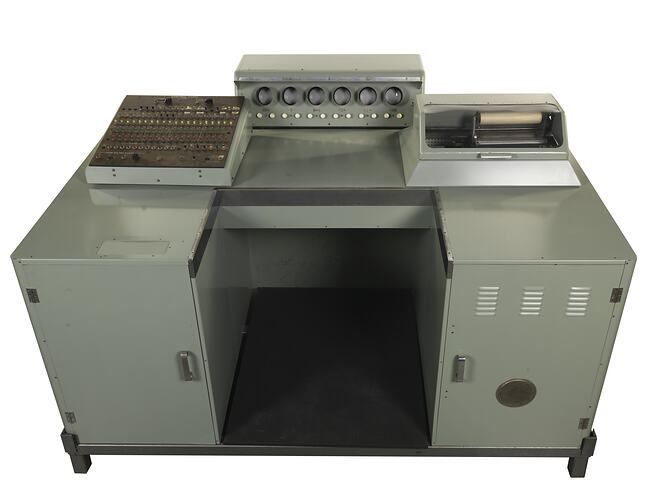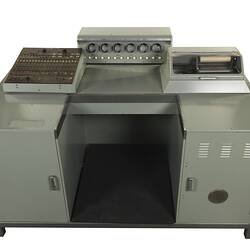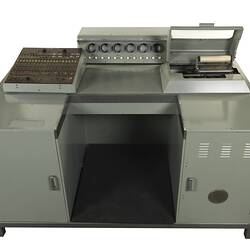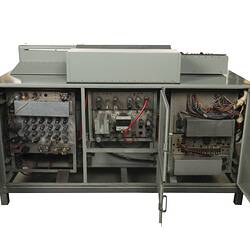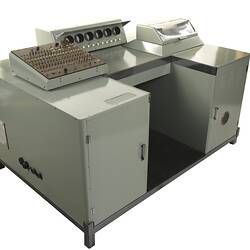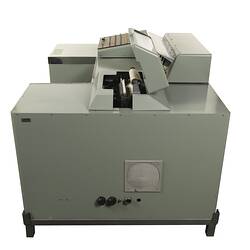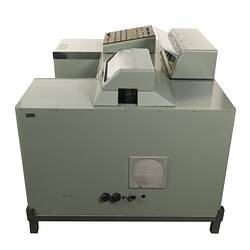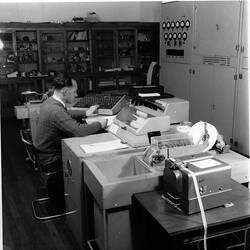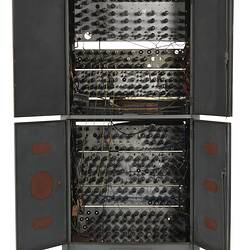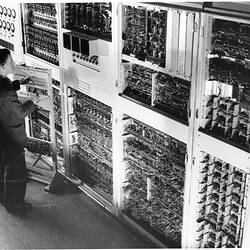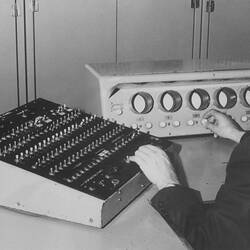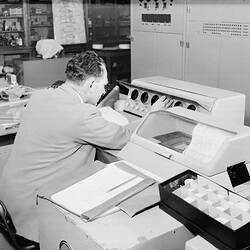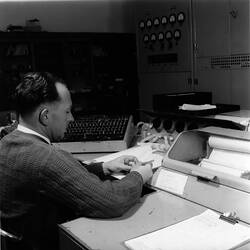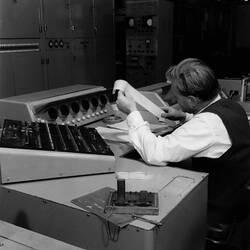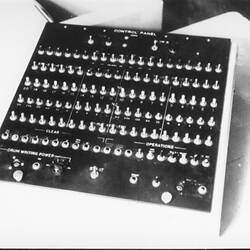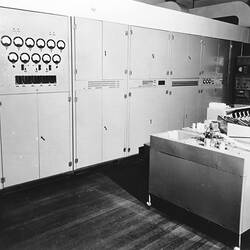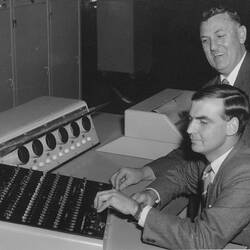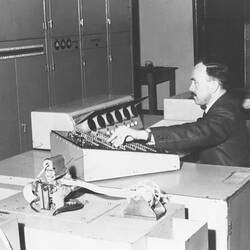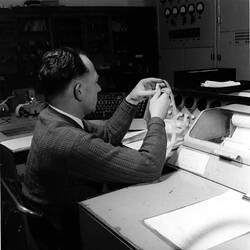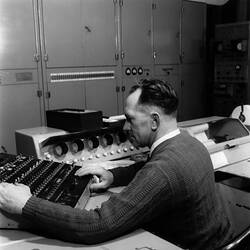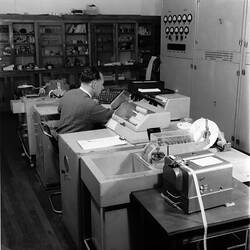Summary
The console was like the cockpit of an aeroplane of the time.
The console was mainly used to initiate, control and monitor a program being run. It could also be used to intervene in a program at predetermined places in the program or to check the status of a program if the operator desired.
The operator sat at the console and controlled the operations of the machine. It consisted of sets of switches, six screens and a loudspeaker. There was also a teleprinter and a 5 hole punch but only because it was conveneint to locarte them on the console.
The operator started the machine by setting certain switches. He was also able to control the tape readers and punches.
Some of the switches were in groups of 20 because the word length for the computer was 20 bits. This allowed control of the machine at the bit level.
One of the screens displayed the contents of the memory and the other screens displayed the contents of the arithmetic registers. The memory display only showed 16 words of 20 bits. Switches controlled which 16 words were to be displayed.
The teleprinter had been the principal output of the machine, but was hardly used in Melbourne after the 5 hole input and output devices were installed in the late 1950s.
There was a loudspeaker (known as a hooter) mounted in the door of the right hand side cupboard. It produced tones when directed by the currently running program. These indicated when a particular stage in the program had been reached or when an error had occurred (if this was specifically programmed). A 'hoot stop' (a continuous hoot) could be programmed to indicate the end of program and this would be switched off at the console.
Switches on the console could be used to stop a program at a desired point in order to change from one reader to another or to load in another program. This was known a a trigger stop.
It was possible to write a program with the switches, for example, to investigate faults.
The console was installed at the time CSIRAC was moved to Melbourne from Sydney. There was no console in Sydney; the switches were on a free standing frame and the screens were located on Cabinet. Front 3.
The way the console, its controls and monitors were used is very similar in principal to the way the keyboard, mouse and monitor are used in a late 20th Century personal computer
More Information
-
Collection Names
-
Collecting Areas
-
Acquisition Information
Donation from Commonwealth Scientific & Industrial Research Organisation (CSIRO), Frank Hirst - University of Melbourne (The), Mar 1965
-
User
University of Melbourne (The), Grattan Street, Parkville, Greater Melbourne, Victoria, Australia, 1955-1964
-
Classification
-
Category
-
Discipline
-
Type of item
-
Exhibition Collection Management
1805 mm (Length), 1275 mm (Width), 980 mm (Height)
H 1135 mm with stillage
-
Keywords
Computers, Computing, CSIRAC (Computer), Making History - CSIRAC
